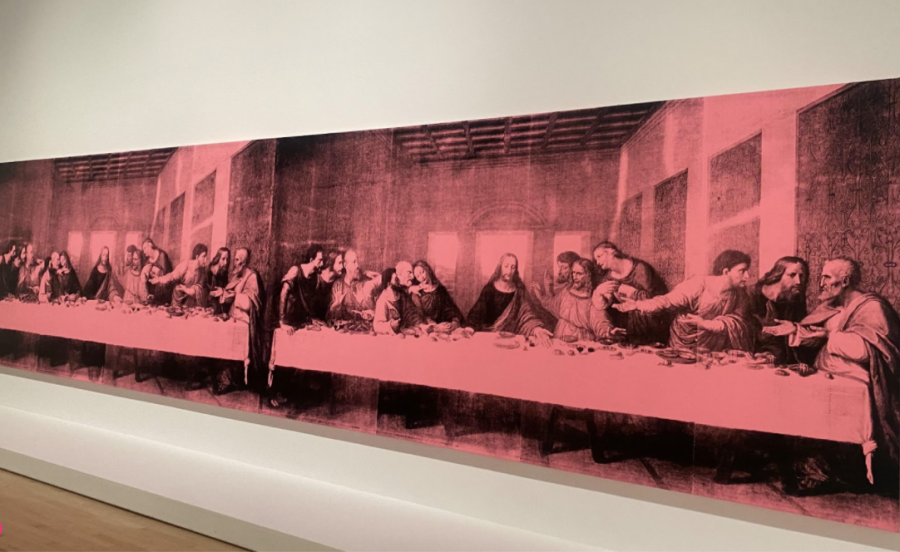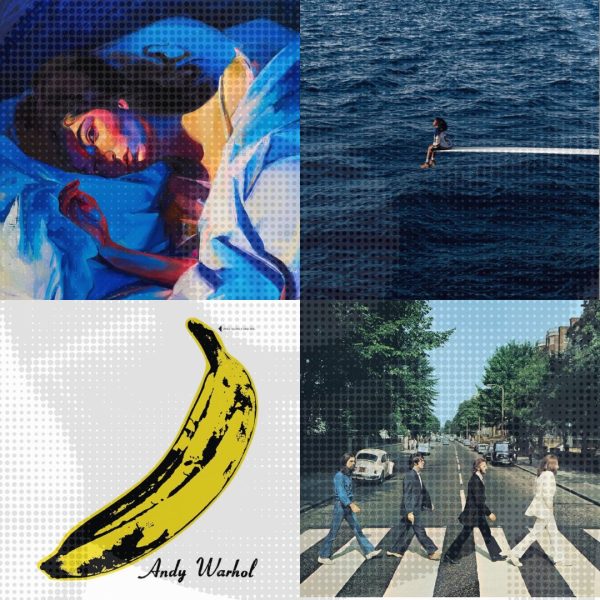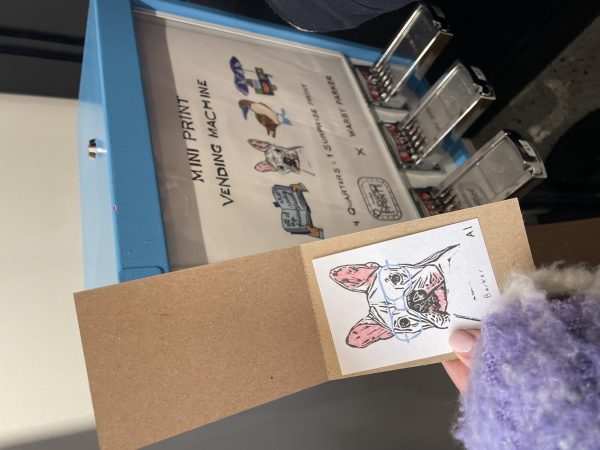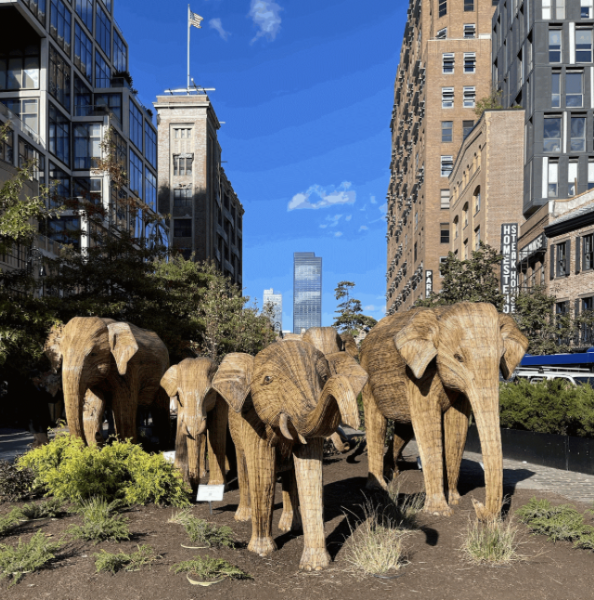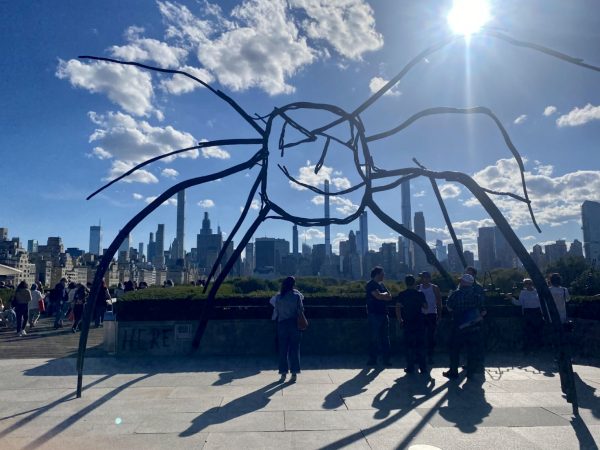Unconventional Catholicism Presented in Warhol’s “Revelation”
“The Last Supper” is Warhol’s rendition of Leonardo DaVinci’s original painting (Courtesy of Caroline Durkin).
As the king of pop art during the vivid and vibrant ’60s and ’70s, Andy Warhol’s legacy extends beyond his notorious prints which is highlighted in “Andy Warhol: Revelation” — Brooklyn Museum’s homage and love letter to Warhol’s works and his humanity.
Warhol is typically thought of as the larger-than-life artist behind the notorious pop art prints of “Shot Marilyn,” “Campbell’s Soup Cans” and “Banana.” His more mainstream works are seemingly playful and, at times, read as surface level. Brooklyn Museum’s “Revelation” presents Warhol’s complexities beyond what meets the eye. “Revelation” highlights how faith and sexuality, women’s issues, power dynamics and immigrant roots have influenced his art.
When you first walk in, the entrance to the “Revelation” exhibit instantly highlights Warhol’s faith — an initial explanation of Byzantine Catholicism greets museumgoers as they first enter the exhibit, priming viewers for a faith-based view of Warhol’s most complex, yet occasionally overlooked, pieces. The exhibit displays Warhol’s humanity through his presentation as a man of religion. Warhol was Byzantine Catholic and frequented St. John Chrysostom Byzantine Catholic Church in Pittsburgh, Pennsylvania.
The Byzantine Church emphasizes Eastern European traditions, including the veneration of icons and following the Julian calendar (in which Christmas is celebrated Jan. 7). Chanting, consecration of bread and wine and use of incense are commonplace during services.
Warhol’s faith continued through his move to New York City in 1949. He attended three different parishes: St. Vincent Ferrer Roman Catholic Church in Lenox Hill, St. Mary’s Catholic Church of the Byzantine Slavonic rite in Gramercy Park and the Cathedral of St. John the Divine in Morningside Heights. Throughout his life, Warhol’s faith remained central to his identity and he was honored with a traditional Byzantine Catholic funeral service in his hometown of Pittsburgh.
Despite his commitment to his faith, Warhol also lived proudly as a gay man during the AIDS crisis. He was entangled within the era of “sex, drugs and rock and roll.” Many of Warhol’s pieces display the inner struggle faced by those who identify as LGBTQ+ and coexist as a part of the Catholic Church.
Warhol’s commentary on faith and his complicated, yet passionate, relationship with it is a consistent theme throughout the exhibit. Most specifically, “Revelation” highlights Warhol’s emphasis on and the celebration of the Catholic body and human form. Between depiction of the Crucifix and embraces of the Virgin Mary, Warhol pays homage to the Catholic body through many of his works. Blurring the lines between the out-of-body experience that is spirituality and the physicality of Catholicism, Warhol’s series “The Last Supper” is a combination of high and low art putting physical touch and its relationship to Catholicism under the spotlight. “The Last Supper” series is a collection of over 100 pieces reworking aspects of Leonardo da Vinci’s high Renaissance mural depicting Christ and the Apostles.
Warhol’s emphasis on the Catholic body can easily be identified as a product of his perception of his own body and its vulnerability. As explained in the exhibit, Warhol became obsessed with his body and wellness, which resulted from his attempted murder and the AIDS epidemic. His experience as a gay man in the early years of the HIV/AIDS crisis clearly haunted him. While his Catholic faith has been described as his source of personal strength, it is — quite literally — shown as a double-edged sword. In a collection of works depicting crosses side by side with knives, we can see the complications of his identity. Veneration of the male nude combined with hands clasped in prayer work serves as imagery demonstrating the complex intertwinings of queerness and Catholicism.
Warhol is one of the most celebrated and timeless artists of the postmodern art era. His work is a celebration of his humanity, vulnerability, faith and sexuality. “Andy Warhol: Revelation’’ highlights the complexities of Warhol’s life beyond his playful identity as “the king of pop art.” Emphasis on Catholic iconography and the human body depict Warhols presentation as a member of the LGBTQ+ community and a man dedicated to his faith. His work acts as a timeless reminder that identity is in the eye of the beholder, even in the case of conflicting moral values. In Warhol’s case, this is his queer identity and dedication to the Catholic church, which typically is unaccepting of pride in both human sexuality and homosexuality. Brooklyn Museum’s “Revelation” is a celebration of Andy Warhol and a commemoration of individuality.



































































































































































































